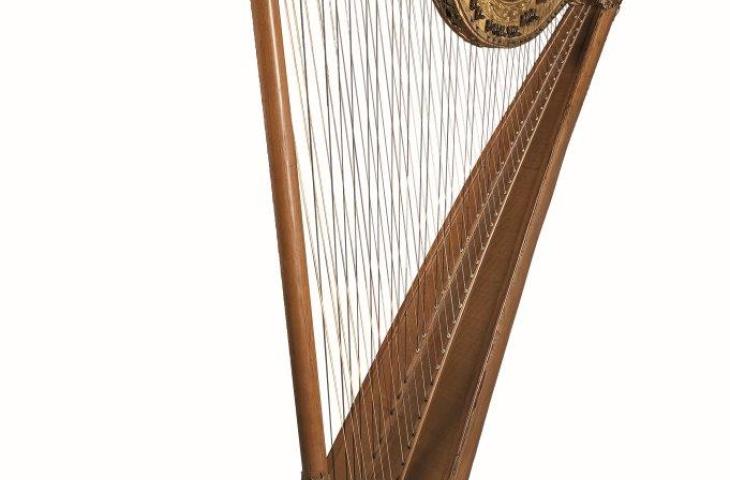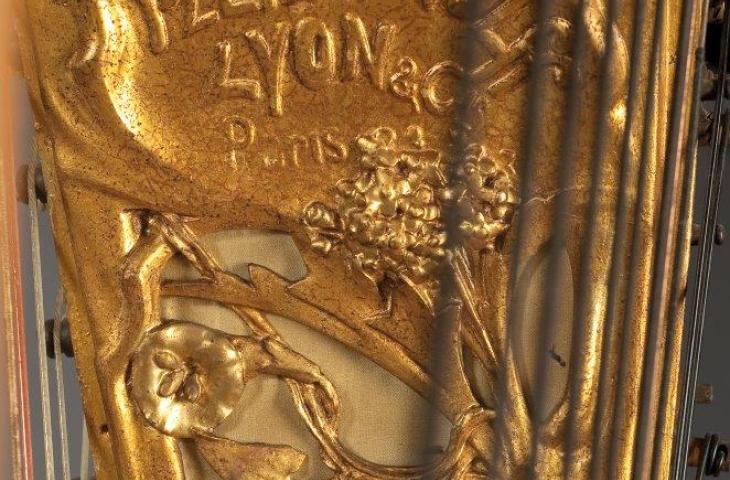Chromatic harp

Chromatic harp, Pleyel, Wolff, Lyon & Cie, Paris, end of the 19th century
Chromatic harp

Harpe chromatique, Pleyel, Wolff, Lyon & Cie, Paris, fin 19e siècle, inv. 2000.001
In the eighteenth century, the harp was equipped with pedals. However, such harps were not suited to playing the late-nineteenth-century complex, chromatic music of such composers as Wagner, Fauré and Richard Strauss, and this prompted Gustav Lyon, head of the Pleyel firm in Paris, in 1894 to market a chromatic harp. To that end, he reverted to the cross-strung harp, which was already known in the Renaissance and the Baroque Period. A particular characteristic of the chromatic harp is that it has a separate string for each semitone. One series of strings corresponds to the white notes of the keyboard, the other series to the black. To save space, the series of strings are cross-strung, rather than being placed behind each other.
A course for the chromatic harp was established at the Brussels Conservatory in 1900 and another later at the Paris Conservatory. Great composers such as Debussy took note of the new instrument and wrote music for it. Production of the chromatic harp was halted in 1930, but a number of fine instruments from that short period have been preserved, including this example in Art Nouveau style.